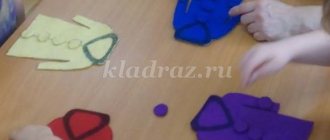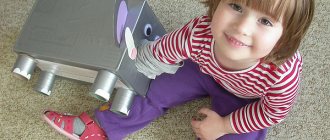WHY DO YOU NEED TO DEVELOP MOTOR SKILLS?
Finger control is the most important skill for a person. It is used in almost any activity related to study or work. Without the ability to carefully measure every movement, it is impossible to master writing, drawing, or typing on a computer. Even everyday tasks such as tying shoelaces or untangling headphone cords require a high level of finger control. That is why attention is paid to motor development from the earliest years of the baby.
Scientists have long identified a connection between finger skills and intellectual development. Training hand flexibility and dexterity also puts stress on those areas of the cerebral cortex that are responsible for memory, attention, speech and visual perception of information. Thus, improving the accuracy and strength of finger pressure directly affects the child’s other abilities.
Many games in kindergarten and at home are aimed at developing skills that will be useful in first grade, and training hand dexterity is no exception. It will become the basis for learning to write and the further formation of beautiful handwriting. Therefore, the development of fine motor skills in young children requires special attention. What important nuances do parents need to take into account?
Fine motor skills in children aged 4 years
A child at 4 years old is already quite big, and the development of hand motor skills is almost complete.
How to develop hand motor skills in a child aged 4 years
Around this time, the child begins to be interested in artistic creativity, complex games and other activities that require manual dexterity. For example, he may be interested in the following activities:
- Draw full-length human figures with arms, legs and face.
- Write block and capital letters.
- Draw, trace and sketch geometric shapes.
- Draw with paint and fingers.
- Sculpt figures from plasticine.
- Cut out complex shapes from paper using children's scissors.
- Play with blocks and use them to build tall or massive structures, such as a tower or fortress.
- Play cards or board games.
Summarize
| At the age of 4 years, a child usually develops the following skills: ● He knows how to brush his teeth independently under the guidance of his mother. ● He dresses independently with virtually no help from his mother. ● He knows how to tie his shoelaces. ● He has no problem using cutlery, even a knife. ● He goes to the toilet on his own and takes care of himself. |
DEVELOPMENT OF FINE MOTOR SKILLS IN YOUNG CHILDREN
Whether it’s training fine motor skills or developing other skills, when it comes to a child, parents should take into account a number of recommendations to ensure that the activities are both productive and harmless. First of all, you need to select exercises that include elements of the game. The child should not be overworked and tired from training, otherwise he will lose motivation to train. In such a case, it will be very difficult to achieve any visible result.
When a child is asked to complete a particular task, parents should be present next to him and actively participate in the training process. Help your child if he has difficulties with any exercise, and praise him even if not everything works out. Then the training will not cause negative associations in the child.
Classes should not take much time. It is better to do several short workouts than to perform the same exercise for a long time. Choose a few games that help your child develop his motor skills and alternate them throughout the week. The more varied the load, the easier it will be to maintain the baby’s interest.
The effectiveness of such training largely depends on the choice of educational games and exercises. Let's talk about which of them are best suited for the development of fine motor skills in children at an early age.
What are fine motor skills?
Fine motor skills are the ability to coordinate the movements of the small muscles of the wrist, palms, fingers, and even toes. General motor skills are the ability to coordinate the movements of large muscles of the arms, legs and feet, as well as the ability to control the entire body. How to develop hand motor skills in a child? To do this, you can perform special exercises with him and play age-appropriate games. Even the simplest exercises, such as moving a toy brick or picking up a piece of food from a plate, prepare your baby for more complex tasks, such as writing or buttoning up buttons. It must be remembered that a child’s development can proceed in different ways, and everyone develops at their own pace. Compared to other children, your baby's development of fine and gross motor skills may be either advanced or delayed, and this is normal.
EDUCATIONAL GAMES FOR HAND MOTOR SKILLS
Modern kindergarten teachers and school teachers often note that the motor development of children leaves much to be desired. There are a number of games and exercises that can improve finger mobility and flexibility. Let's consider those that are suitable even for small children and bring the best results:
- finger games. The main advantage of such exercises is that they are suitable even for the smallest. Finger games are both fun nursery rhymes that lift the baby’s spirits, and important training for the mobility and flexibility of a child’s hands.
- origami. Folding various paper figures contributes not only to the development of finger flexibility, but also to the formation of perseverance in young children. At first, such exercises will be difficult, but gradually the kids will improve their skills and learn to give paper the most unexpected shapes.
- modeling from plasticine or dough. This type of creativity promotes the development of finger motor skills and perfectly trains the hands. In order for the intended figure to turn out, you need to carefully measure every movement, because pressing too softly or too hard can ruin the work.
- lacing. Even the simple act of tying shoelaces is important fine motor practice. You can also encourage your child to untangle loose knots on strings - this exercise will help kids learn to better control their finger movements.
- constructor assembly. Today you can find many options for these toys to suit every taste. In addition to the benefits for finger development, children learn to use their imagination and act unconventionally. They arrange the parts at their own discretion and assemble a variety of figures from the same set - a house, a car, robots, and so on.
- drawing. When a baby draws with a pencil or paints, he learns to express his imagination on paper. In addition, he has to strain his fingers and control their work, which has a positive effect on motor development. Drawing can be called a preparatory stage for learning to write.
Thus, the development of fine motor skills in children in preschool age is a kind of preparation for entering the first grade. But it is necessary to improve children’s skills in many ways, because flexibility and mobility of fingers is only one of the basic abilities that need to be trained. Let's talk about programs that develop both hand motor skills and intelligence of preschoolers.
Fine motor skills in children aged 1 year
Congratulations! Your baby is one year old! At this age, the child’s development is progressing by leaps and bounds, and he can already do a lot of things. Parents are usually impressed by gross motor skills, particularly the long-awaited first steps, but there is also something to be surprised about in the area of fine motor skills. Thanks to improved gross motor skills, the child is increasingly eager to explore the world around him. In the process, fine motor skills are also improved. The baby still cannot grasp the smallest objects, but this achievement is not far off. While your child enjoys exploring and playing with larger objects, such as wooden blocks and wooden puzzles. At this stage, significant progress occurs in the development of hand-eye coordination. Nowadays, the child increasingly uses one hand, but this does not mean that his leading hand has already been determined (that is, he will be left-handed or right-handed).
How to develop hand motor skills in a child aged 1 year
As your child gets older, you can do the following exercises to develop hand motor skills:
- Show your child how to fold paper. You can make an accordion fan or a paper airplane with it.
- Have your child insert different shaped blocks or pegs (square, rectangular, triangular) into the corresponding holes.
- Show him how to stack the blocks on top of each other to make a tower.
- Offer him toys that can be taken apart and put together safely, such as a set of cups that nest inside each other.
- Invite him to sculpt something from plasticine.
- Entrust him with simple housework, such as sweeping, arranging items, or helping you prepare food (stirring pancake batter or putting vegetables in a pan).
- Play together outside, for example, you can throw a ball to each other.
Summarize
| Between the ages of 1 and 2 years, a child develops the following skills and abilities: ● He can build a tower from blocks and immediately break it. ● He plays with boxes, containers and their lids. ● He can lift a moving object, such as a ball. ● He leafs through books. ● He turns the door handles. ● It knows how to insert pins into the corresponding holes. ● He draws with pencils or fingers. ● He knows how to drink from a mug. ● He can feed himself with a spoon (with varying degrees of success). |
WHAT METHODS IS BETTER TO CHOOSE
To successfully adapt to school, your child must come to first grade prepared. To do this, you need to take a large-scale approach to developing his abilities. In addition to fine motor skills, it is also necessary to train logical thinking, memory, and expand creativity. A technique that copes well with this task, and also teaches children to quickly count in their heads, is mental arithmetic.
It is based on calculations on special accounts - the abacus. First, kids learn to move the abacus bones, master the operating principle of this instrument, and later try to perform simple mathematical operations on them. When this method of calculation no longer causes difficulties, children learn to imagine the abacus in their minds and count on it. Over time, skills are honed, and kids show amazing results, because they manage to make calculations even faster than adults do on a calculator.
The key feature of mental arithmetic is the simultaneous use of two hemispheres of the brain: the left, which allows you to think logically and analytically, and the right, which is responsible for creativity and creativity. Such a diverse load makes the human brain work more productively, which has a positive effect on a variety of areas of intelligence:
- Memory and memorization are trained, as well as skills in working with information.
- logical thinking and analytical abilities develop.
- Creative potential expands and creative thinking develops.
- the reaction speed increases, allowing you to more quickly respond to tasks and solve them faster.
- Concentration improves, which greatly helps to maintain attention in school lessons.
- interhemispheric connections are formed, allowing you to study more effectively at school and at home.
In addition, mental arithmetic is an excellent fine motor skills trainer and a means of learning how to quickly count in your head without using a calculator. The advantages that this technique provides make it one of the most effective programs for the development of children of preschool and school age.
Learning mental arithmetic is a great way to prepare for school. The motor and intellectual development of the child, which can be achieved through this program, will become an important basis for later life. Mental arithmetic skills will be preserved forever, which means that even in adulthood, this technique will again and again help you achieve success in any endeavor.





